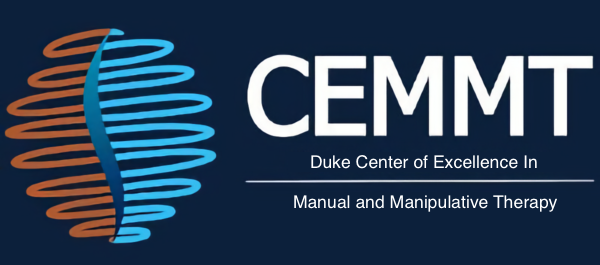Home » Articles posted by Karen Simsen
Author Archives: Karen Simsen
On Mastery
November 20, 2023 / Leave a comment
By: Seth Peterson, PT, DPT, OCS, FAAOMPT
“I don’t know how they can sleep at night.” I was getting chewed out in a hallway in my first year of residency training. My mentor was speaking in general terms, but it was painfully clear that “they” meant me. I had just seen an 11-year-old girl with an ankle sprain. I had given her a painful balance exercise in standing (because the evidence showed it was more effective) and we had talked about pain neurophysiology, which was cutting-edge at the time. Her problem with what she’d just witnessed was that, despite me applying “evidence-based care,” she hadn’t really seen me apply that care to the individual. She hadn’t seen me think.
Looking back, my lack of thinking about the interventions was made worse by the fact that I was doing so much thinking about the simple things. While my mentor was thinking about the words used to greet someone and deciding what mattered to that person on that day, I was focused on how to sequence an ankle examination. I was focused on the basics—and the basics were something they did unfailingly well. Using the conscious competence learning model, you could say I was at a stage of “conscious incompetence” while they were well into the “unconscious competence” stage. Another way to say it is they had “mastered” the basics, while I was just beginning to grasp them.
An Exercise in Interpreting Clinical Results
November 13, 2023 / 1 Comment on An Exercise in Interpreting Clinical Results
By: Chad E Cook PT, PhD, FAPTA
Randomized Controlled Trials
In clinical research, treatment efficacy (the extent to which a specific intervention, such as a drug or therapy, produces a beneficial result under ideal conditions) and effectiveness (the degree to which an intervention achieves its intended outcomes in real-world settings) are studied using randomized controlled trials. Randomized controlled trials compare the average treatment effects (ATEs) of outcomes between two or more interventions [1]. By definition, an ATE represents the average difference in outcomes between treatment groups (those who receive the treatment or treatments) and/or a control group (those who do not receive the treatment) across the entire population. Less commonly, researchers will include a secondary “responder analyses” that looks at proportions of individuals who meet a clinically meaningful threshold.
Disentangling the Truth about Manual Therapy
October 31, 2023 / 1 Comment on Disentangling the Truth about Manual Therapy
By: Chad E Cook PT, PhD, FAPTA
The “Facts” Please
Perhaps you’ve heard the following “facts”? The Great Wall of China is visible from space. If you touch a baby bird that is in its nest, the mother will abandon it. If you flush a toilet in the Southern Hemisphere, water rotates in the opposite direction through a process known as the Coriolis Effect. I’m uncertain when and where I’ve heard these, but I was surprised to have learned recently that each of these “facts” is actually false [1]. The Great Wall is not visible at low earth orbit without magnification and baby birds are not abandoned once touched. In fact, most birds have a poor sense of smell and won’t even detect that a human has been there. Lastly, toilet construction dictates how water rotates once flushed, not its position on the earth [1]. Each of these statements, which I’m certain you and I have heard numerous times, is an example of the “illusory truth effect” [2].
Manual Therapy: Manipulation of the Brain?
August 25, 2023 / 1 Comment on Manual Therapy: Manipulation of the Brain?
By: Tara Winters PT, DPT
When a person walks into the clinic with low back pain with primary nociplastic pain mechanisms, I’m armed and ready with a number of treatment ideas. This is thanks to the leaps and bounds made in the last 20 to 30 years in the world of pain science. “Let’s see if you can distinguish this photo of a right hand versus a left hand”, “I’m going to create a quadrant on your lower back and I want you to tell me which quadrant you feel pressure in”, “Let me tell you about the science behind your pain!”. We then find ourselves down this (evidence-based, of course) rabbit hole of treatments, termed graded motor imagery (GMI), with manual therapy falling lower on our list of treatment needs. Can you relate?
Recent Blogs »
-
Advantages and Disadvantages of Research Metrics used to Evaluate a Researcher’s Impact or Influence
By: Chad E Cook PT, PhD, FAPTA Background: Each year, in Duke University’s Division of Physical Therapy, I teach a class on research methodology. One…
-
“It’s Not You, It’s Us…”: Heterogeneity of Treatment Effects as a Challenge to Effectiveness Trials.
By: Damian L Keter, PT, DPT, PhD Background: Comparative effectiveness studies are the cornerstone of medicine and health sciences research. They have a goal of…
-
Is Myofascial Pain Syndrome a Legitimate Primary Diagnosis?
By: Chad E Cook, Damian Keter, Ken Learman Background: Myofascial Pain Syndrome (MPS) is hypothesized to be both a primary and/or a secondary chronic pain…
-
Risk of Bias Measures can be Biased
By: Chad E Cook, Damian Keter, Ken Learman Navigating the Literature: Navigating the ever-growing, healthcare literature can be challenging [1]. The sheer amount of new…
-
Why Isn’t Everyone Using Stepped Care for Musculoskeletal Injuries?
By: Chad E. Cook PT, PhD, FAPTA Resource efficiency models Musculoskeletal (MSK) outcomes have shown some concerning trends over the last decade. Conditions like low…
-
Three Ways That Recruitment in Randomized Controlled Trials May Not Reflect Real Life
By: Chad Cook, Amy McDevitt, Derek Clewley, Bryan O’Halloran As we wind up a year of recruitment on the SS-MECH trial [1], we are compelled…
